By David Gjestson
Edited by Bruce and Jerry
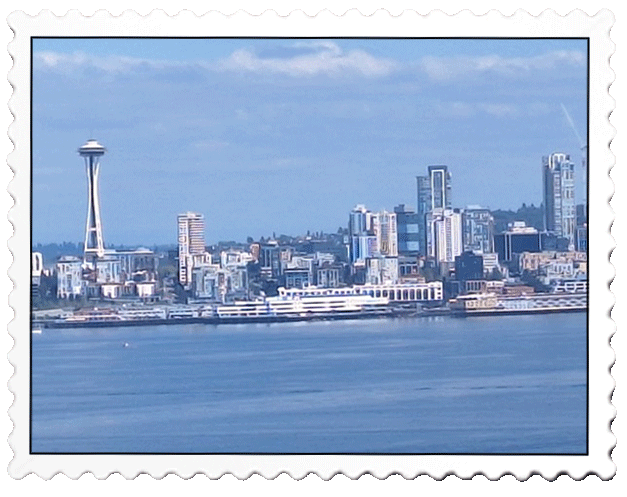
This classic Seattle profile shows off the Space Needle. You can enjoy that adventure by paying between $37.50 and $49, depending on the demand and the time of day.
My cousin, Bruce Stokstad, lives in Seattle and was a catalyst for past hiking adventures in Yosemite, central California, and Mount Rainier. His many solo hikes in the beautiful mountains all over Washington State induced me to invite myself to share some with him during a week of September.
Seattle itself is a destination worth adding to your bucket list. Known as the Emerald City, it is situated between Puget Sound and Lake Washington, with the 14,410-foot Mount Rainier appearing to grow on its southern edge (it is 60 miles south). The tech industry, with companies like Amazon and Microsoft, along with other financial and manufacturing centers, drives the city's economy for its 816,600 residents (4 million in the metropolitan area).
The Boeing Company also has had a huge presence here since the 1930s. As a matter of fact, Seattle was known as The Jet City long before it became The Emerald City. Boeing is still the second biggest employer after Amazon. Microsoft is third.
Seattles skyline features the Space Needle from the 1962 Worlds Fair, and it is a thriving seaport that does a brisk business with Asia and Alaska. The huge, historic Pike Place Market attracts tourists from all over the world. The city supports professional football and hockey teams, Starbucks originated here, and it was the birthplace of grunge music. Jimi Hendrix hails from the area, as do Nirvana and Pearl Jam.
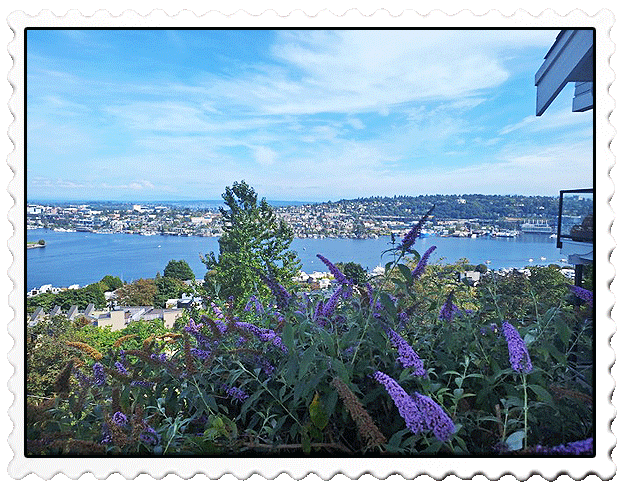
Lake Washington is the second largest freshwater lake in the state, and is fed by the Cedar and Sammamish rivers, with its outlet being the Washington Ship Canal connecting to Puget Sound.
Seattles aesthetics and water sports are enhanced by two lakes and the oceanfront of Puget Sound. Lake Washington is a freshwater lake that forms on the citys eastern boundary, and Lake Union is in the citys center. The Lake Washington Ship Canal allows ships to pass into Puget Sound. The canal also features a large fish ladder, essential for several species of salmon to return to their spawning grounds upstream from Seattle.
The fish ladder at the west terminus of the Lake Washington Ship Canal was built as part of the historic Chittenden Locks that separate the freshwater of the Lake Washington watershed from the saltwater of Puget Sound.
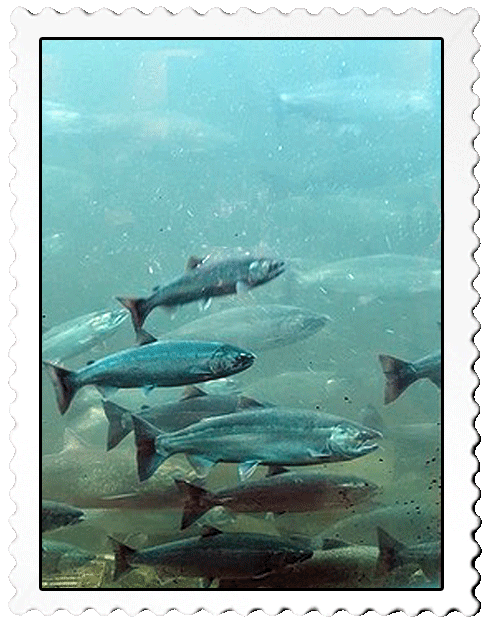
We saw a great run of Coho (Silver) salmon in the viewing area alongside the fish ladder. These salmon were returning from 3-4 years in the ocean to the actual place of their hatching in freshwater.
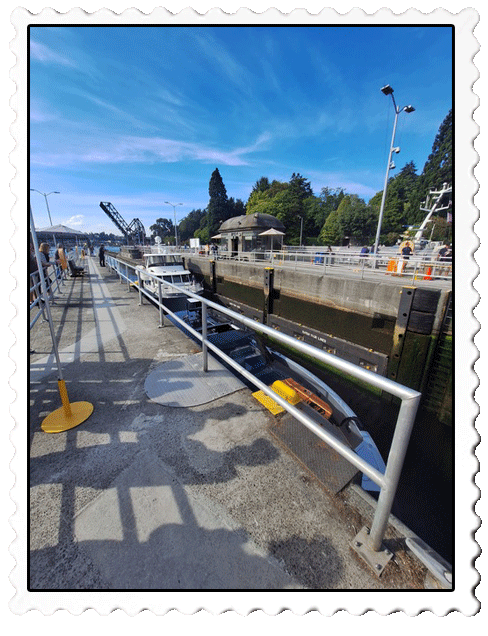
The Hiram M. Chittenden Locks within the Lake Washington Ship Canal enable boats to conquer the 20-foot difference between the lake and the sound.
Cousin Bruce drove us north on State Highway 101 for two and a half hours, with our western horizon conifer-covered by the huge, 922,651-acre Olympic National Park, a splendid resource we intended to camp near and explore over the next five days.
We arrived at our camp location on private lands adjoining the Elwah River just north of the park boundary near Port Angeles late in the day. Bruce had arranged our stay with the propertys caretaker, who happened to be a Stoughton High School classmate, class of 1970! This contact was most fortuitous because not only did we have a place to stay, but we were rewarded with great entertainment!
This interesting mans name was Jerry White, and I learned that his land stewardship so impressed the landowner that Jerry was asked to stay rent-free to take care of the place way back in 1979! Hes been here ever since!
Jerry has been traveling to Asia for the past 43 years, some of it on a motorcycle. He bought a condo in Chiang Rai, Thailand, in 2017 and has been living there for 6 months, and returning to Port Angeles, the Elwah River property for 6 months. Spending time with his granddaughter is a priority activity.
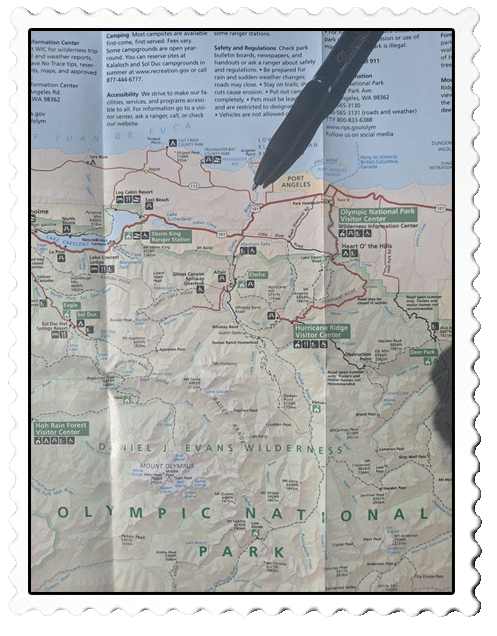
The pen points to the private tract of land where we camped
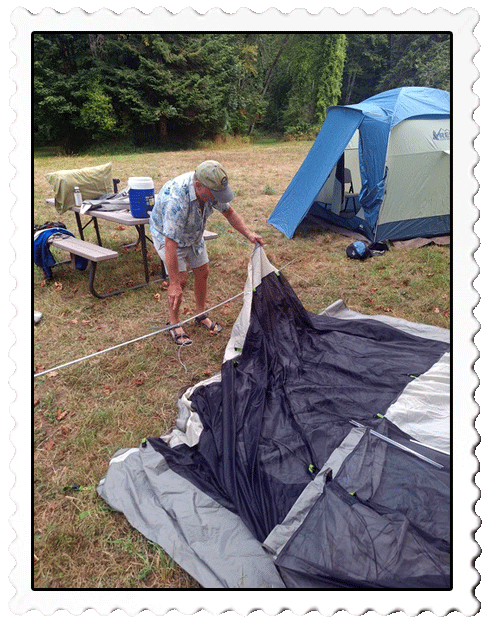
Bruce insisted that I do nothing until he could figure out how to set up the tent!
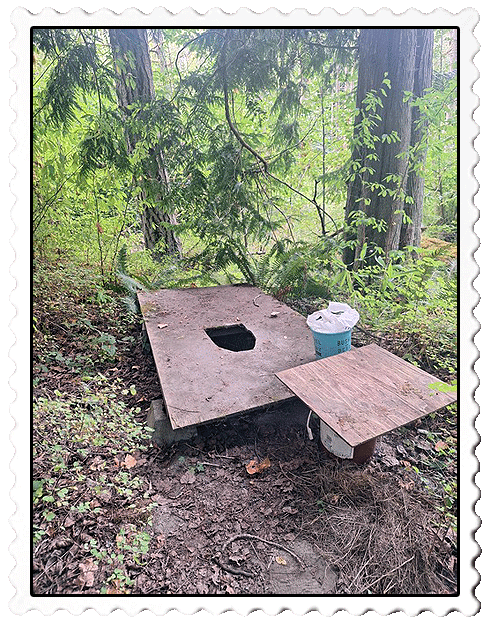
Our bathroom was not the most attractive feature of our camp!
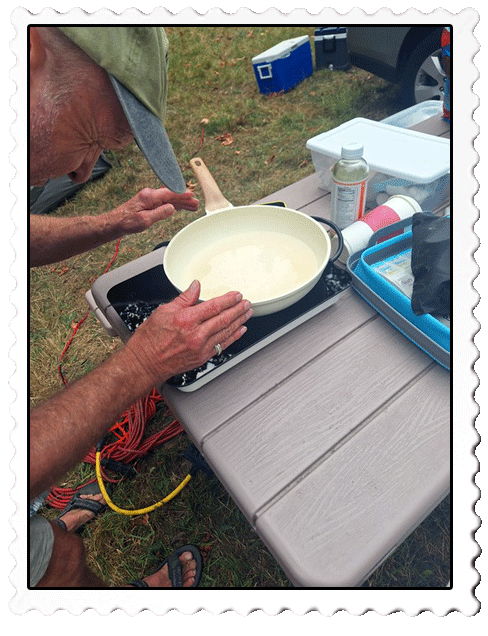
A new techie stove that heats by induction was a surprise. Good thing we had 200 feet of extension cord!
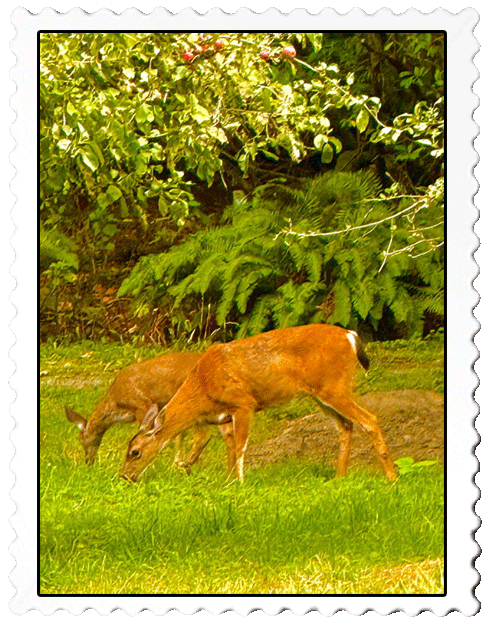
A doe and two fawns, along with two other black-tailed deer, gave us company each evening.
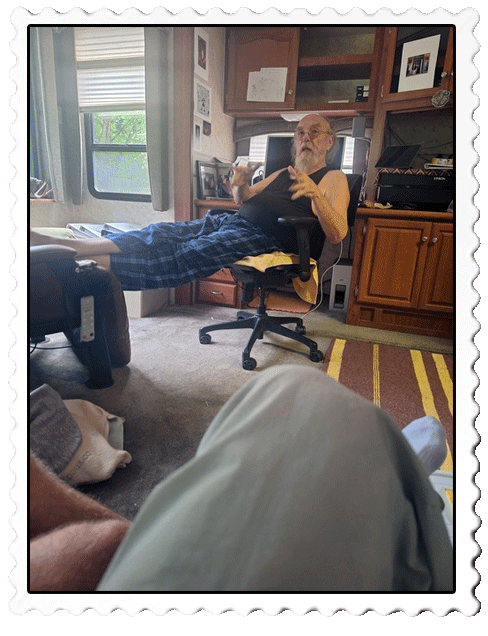
Jerrys stories were endless, and Bruce filled in admirably. I just listened.
Our plan for the next week was to hike various parts of Olympic National Park, enjoy a soak in the parks hot springs, and journey two hours west to Cape Flattery, the point of land which is the furthest northwest you can be in the United States! The weather forecast was in our favor, and the mid-60-degree temperatures were perfect for hiking.
Our evening routine became quite enjoyable as Jerry would invite us to join him in his trailer for a bull session and maybe a movie before bedtime. It turned into a trip highlight as we learned of Jerrys travels all over Southeast Asia, living in Thailand, his experiences operating a salmon troller 50 miles off the coast of Alaska, his flourishing business importing fabric from India, Asia, and Vietnam, and his oak, maple, coastal redwood, and sequoia planting experiment on the land we were camping on.
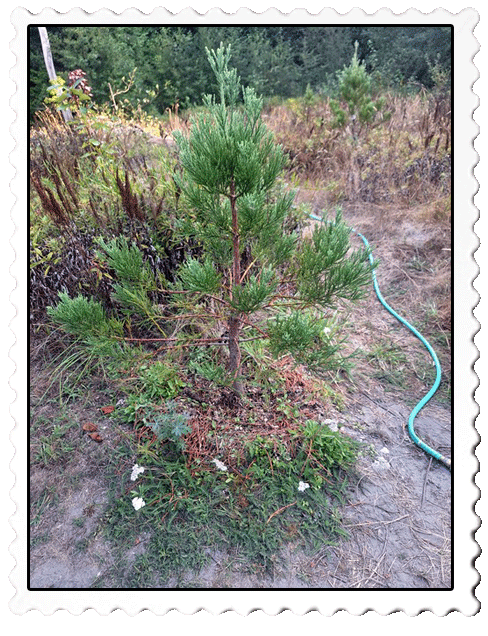
Jerry felt he should give back to the land, so he planted coastal redwoods and sequoias near the river, as well as some maples and an oak.
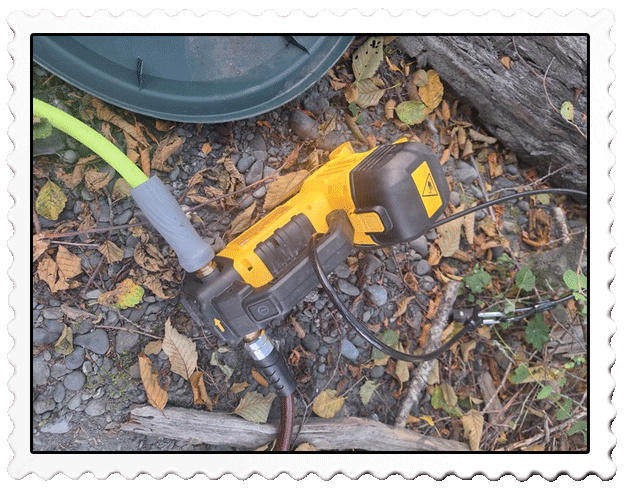
Initially hauling 5-gallon buckets of water every 3-4 days during the summer, Jerry discovered a small, battery-operated pump was the labor solution, and a hose now delivers the water!
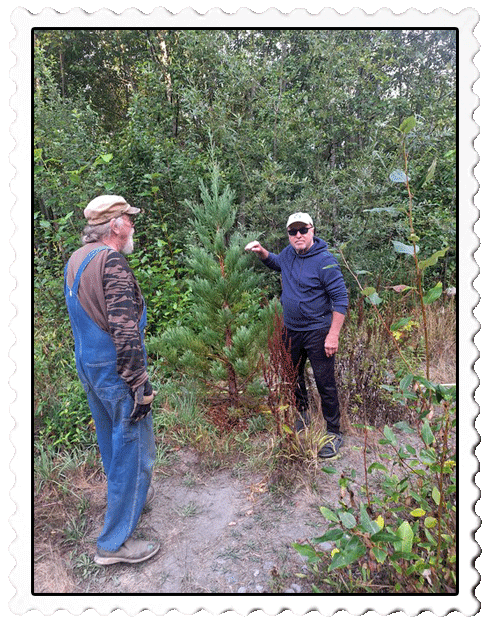
Bruces long-time New York love of his life, Susan McNamara, died two years ago, and Bruce planted this sequoia in her memory. Bruce is pointing to last year’s growth.
For three days, we explored the park. While both of us envisioned that we would hike several miles on various park trails, Bruces very sore bunion and my polyneuropathy, coupled with our aging bodies (Bruce 73, me 85), limited most of our hikes to fractional-mile strolls! We both begrudged our limitations but didnt let that detract from thoroughly enjoying the beauty of the park.
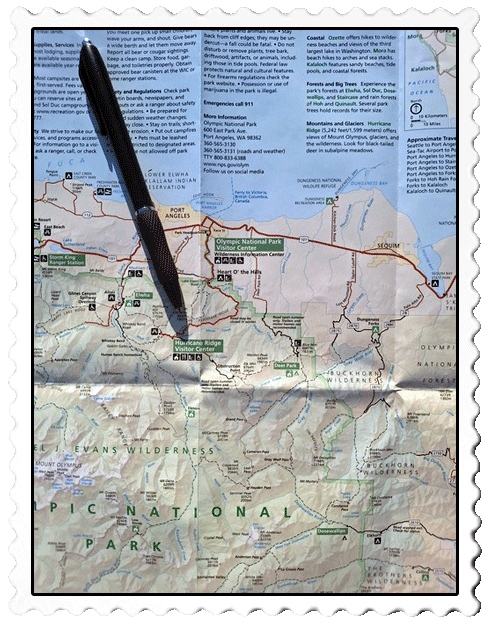
The name Hurricane Ridge enticed us for a visit. The visitor center here had recently burned down, but the view was a good substitute attraction.
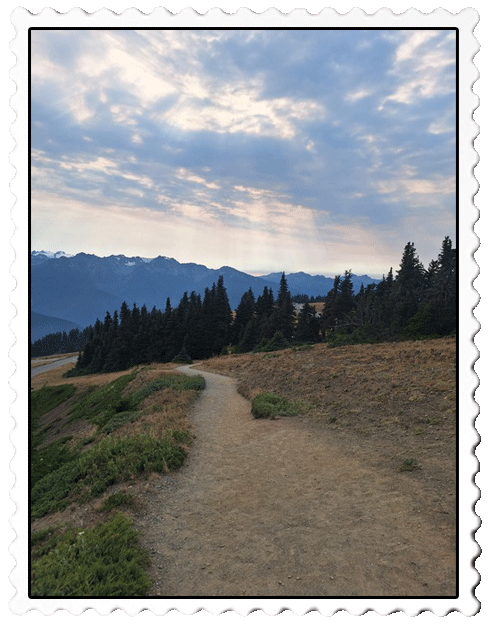
I wasnt exactly thrilled to take this 9-mile, curvy, steep, gravel road in Bruces 2012 Subaru with 163,000 miles on it!
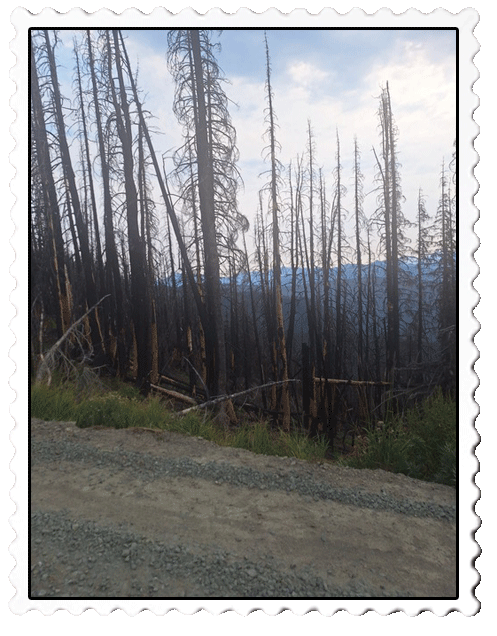
You can bet that the fire that took these trees was a wildfire beyond the help of park firefighters. The rugged terrain often prohibits fire control efforts.
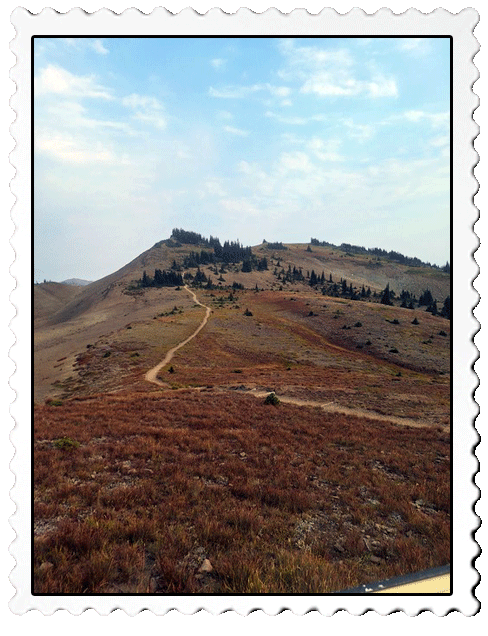
This trail at Obstruction Point is not for tennis shoe hikers
inexperienced hikers. Three hikers Bruce met were exhausted and out of food and water after they completed a 30-mile loop this far but had seven more miles to go to get to their car. Bruce gave them water and some fruit enough to complete their hike!
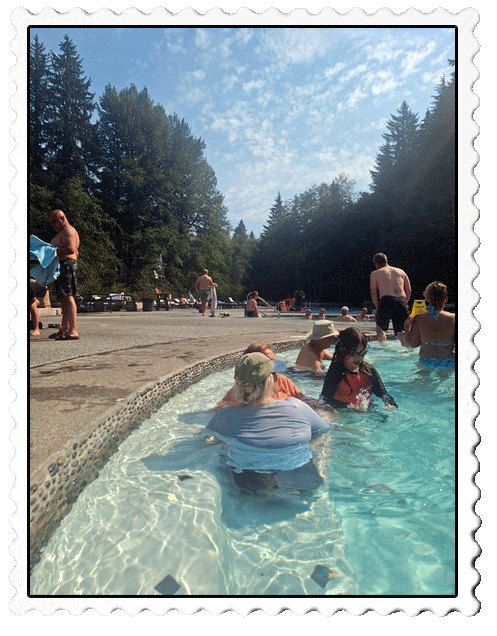
While we did not hike very much, we were eager to soak at the Sol Doc Hot Springs Resort located 40 west of Port Angeles.
The fifth and last day of camping had the three of us journeying two hours northwesterly through the Makah Indian Reservation to Cape Flattery, the northwesternmost point of land in the continental United States. The drive was quite aesthetic, and we enjoyed long views of the Straits of Juan De Fuca, which mark the boundary between the U.S. and Canada.
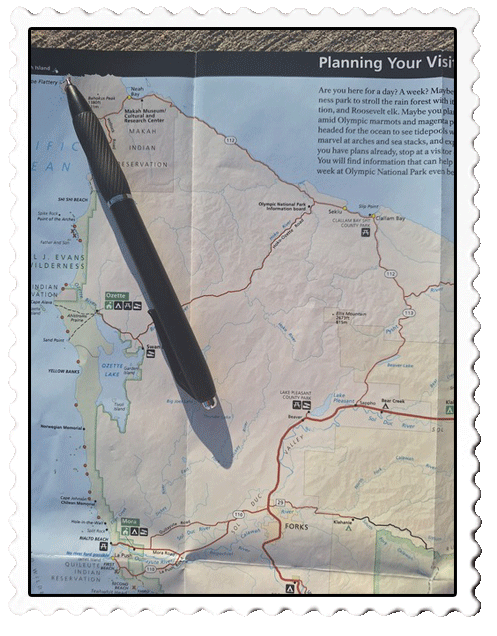
Cape Flattery got its name from the British explorer Captain James Cook because a small opening he saw flattered him with the hope of finding a harbor.
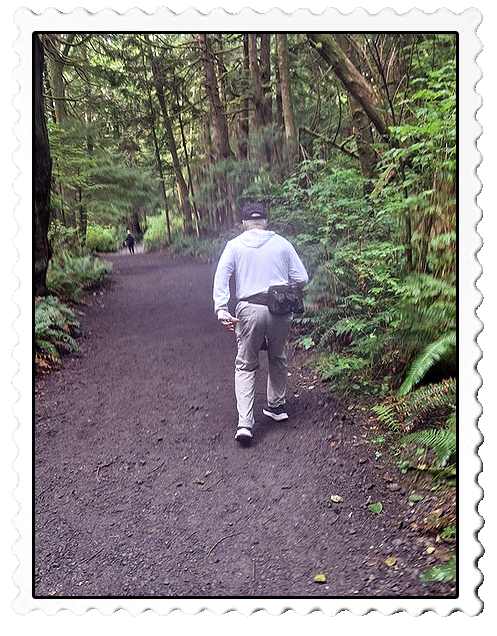
Going into Cape Flattery was easy, but the uphill climbing out
not so much!
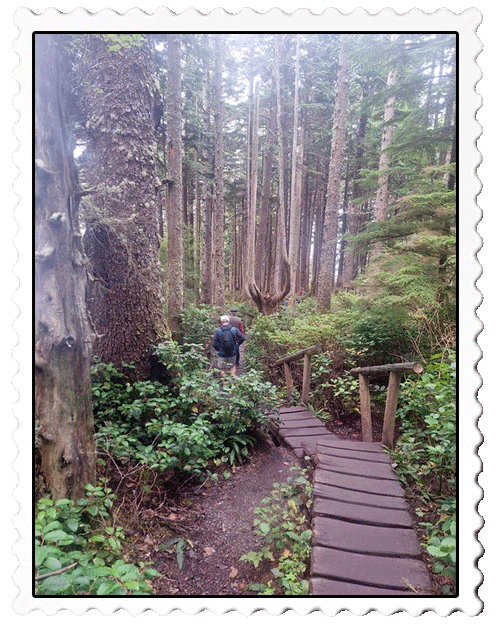
Bruce and Jerry ahead of me on the very old boardwalk portion of the trail.
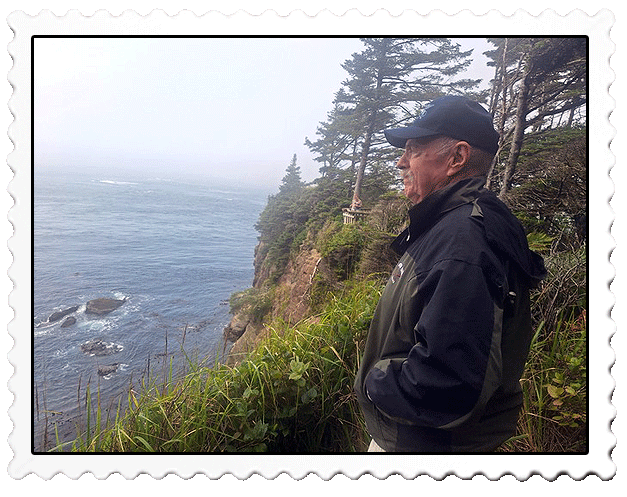
The temperature dropped into the 50s as I enjoyed the view.
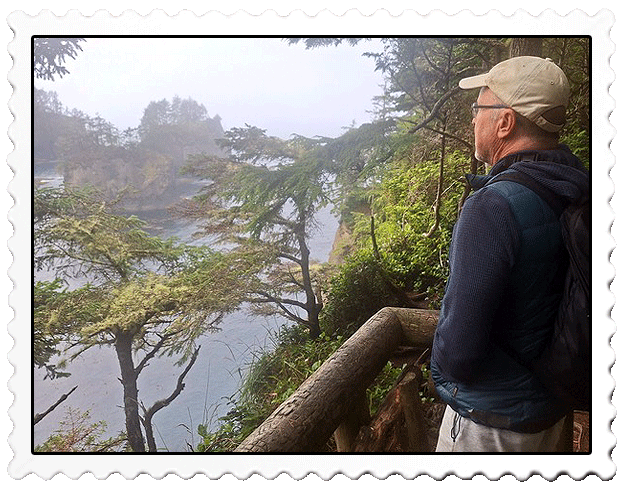
Bruce was contemplative as he took in the ocean view.
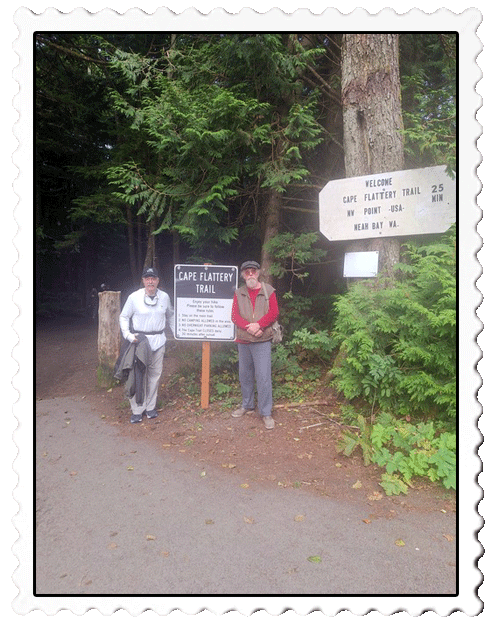
I couldnt resist posing one more time with our legendary host, Jerry White.
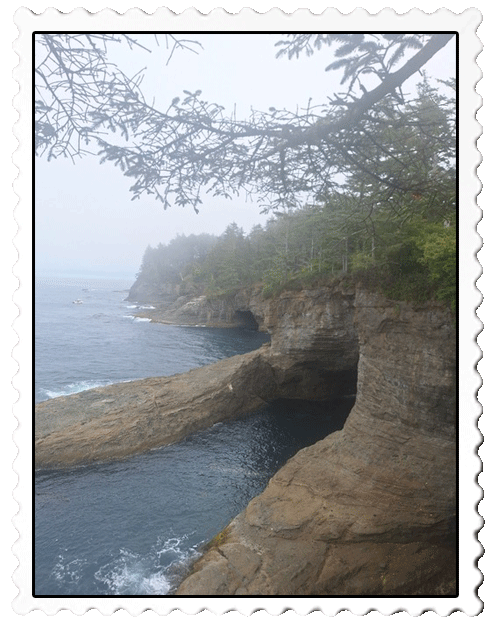
Sea caves carved out by thousands of years of ocean pounding.
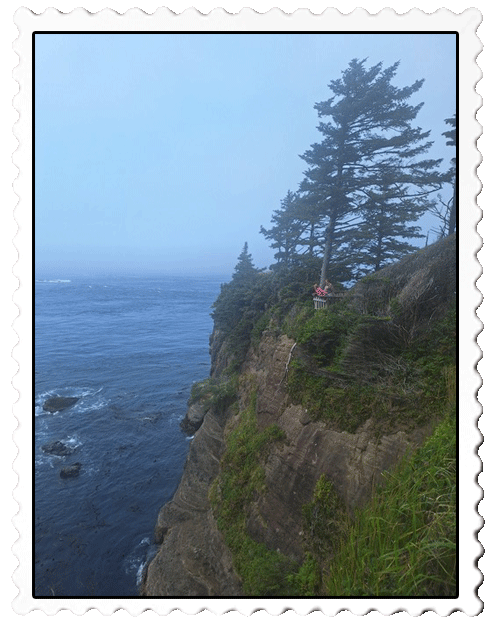
Be quiet, look closely. Can you feel yourself here?
Break camp and hug Jerry goodbye. The trip back to Seattle was uneventful, and we had a relaxing day before I had to fly home. Bruce had time to show me more of this amazing town, and we went to a great lakeside restaurant, Ivars Salmon House, to imbibe in a terrific meal of fresh-caught salmon!
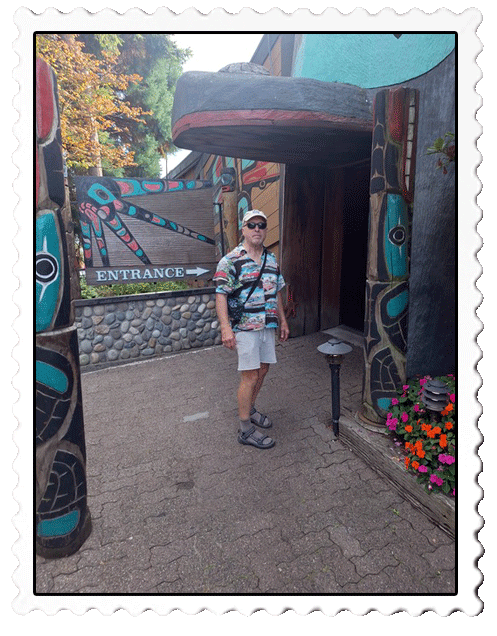
Bruce entering Ivars Salmon House. Ivar Haglund is a local legend and a big part of Seattles historical culture. This was his flagship restaurant. Hes 25 years gone, and his estate sold the business, but the new owners kept Ivars name.






























